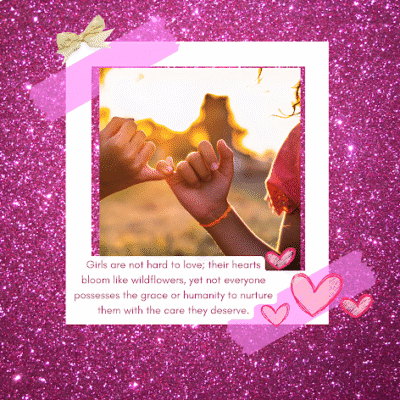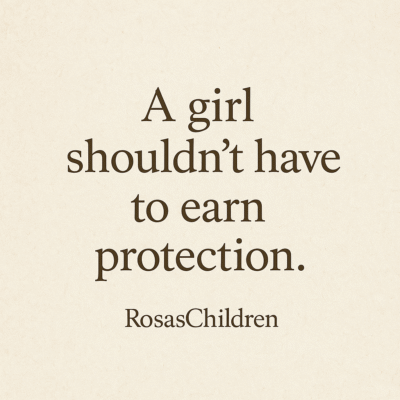In the work of protecting children, hard truths often sit at the intersection of culture, medicine, and power. And in that intersection, those of us w
In the work of protecting children, hard truths often sit at the intersection of culture, medicine, and power. And in that intersection, those of us who advocate for survivors must be brave enough to ask questions that others avoid.
Today, we ask one of those questions:
Do supporters of Female Genital Mutilation (FGM) and supporters of gender-related medical interventions on children share common ground?
At first glance, the answer may seem like a flat no. The goals, language, and philosophies appear completely different. But when we dig deeper—and especially when we listen through the ears of a Survivor-centered, womanist perspective—we find undeniable parallels.
This post is not written to provoke, but to protect. It is not an attack, but a shield. Because no matter what cultural, political, or ideological position one holds, we all have a duty to ask: Are we protecting children—or reshaping them to fit a story that is not their own?
The Comparison
| Key Concern | FGM Supporters | Gender-Affirming Care Supporters |
|---|---|---|
| Justification for Action | Cultural/religious tradition; community norms | Medical and psychological care to support gender identity |
| Child Consent | Often dismissed; parents or elders decide | Claimed to be child-led, but often driven by adults and systems |
| Long-Term Effects | Irreversible, lifelong harm; sexual and reproductive impact | Can involve irreversible changes; long-term unknowns in youth cases |
| Cultural Pressure | Girls must conform to gender roles or face shame, isolation | Children must affirm identity early or face stigma, misgendering |
| Medical Community Role | In some countries, doctors medicalize FGM to reduce harm | Medicalized path is the norm; alternative paths often discouraged |
| Voice of the Child | Rarely prioritized | Claimed to be prioritized, but dissent or uncertainty often erased |
| Language Framing | Protection, purity, tradition | Care, affirmation, liberation |
| Critics Say… | It’s child abuse, bodily violation | It’s child medicalization without full capacity to consent |
 They’re Not the Same—But the Patterns Are Familiar
They’re Not the Same—But the Patterns Are Familiar
FGM is often framed as an ancient cultural tradition meant to prepare girls for womanhood. Gender-affirming medical interventions are often framed as modern, compassionate care to help children find themselves.
But both practices:
- Are irreversible
- Are often performed on children or teens
- Rely on the decisions and interpretations of adults
- Exist in social and cultural systems that punish dissent
Supporters of both often say the same thing:
“We’re protecting the child. We’re helping them. This is for their own good.”
And in both cases, the child may not be allowed to say no.
Through the Womanist and Survivor Lens
Those of us who have stood beside survivors of FGM, childhood medical trauma, coercion, and abuse—we’ve learned to listen differently. To hear the pauses, the pressure, the power dynamics behind every decision made about a child rather than with them.
From a womanist perspective, the deeper questions become:
- Who benefits from this?
- Who profits from it?
- What happens when the child changes their mind?
- Is the child allowed to have mixed feelings, to delay, to say no?
- Are we prioritizing their long-term humanity or short-term conformity?
 Protection Is Not Passive
Protection Is Not Passive
History has taught us that children have been harmed under many banners:
- Purity
- Science
- Religion
- Culture
- Liberation
But what remains constant is this: Adults who truly care about children never rush to remake them. They protect them long enough to become.
“Children do not exist to fulfill cultural roles, ideological missions, or adult discomfort. They exist to become themselves—in peace, with time, and with dignity.”
— WeSurviveAbuse.com
Call to Action
If you are a parent, advocate, medical professional, or educator:
- Learn the history. Learn what Survivors are saying.
- Ask yourself whether a child is being pressured or truly heard.
- Remember that irreversible decisions should never be made under pressure, shame, or threat of abandonment.
- Hold space for children to pause, change course, grow, and question.
Because while FGM and medicalization are not identical, both raise deep moral questions about adult power, societal pressure, and the sacredness of a child’s right to grow up whole.
And we will never stop asking those questions.
 Because Survivors have taught us: When the world stops listening to children, we must raise our voices louder.
Because Survivors have taught us: When the world stops listening to children, we must raise our voices louder.
And to those who criticize us—those who twist our words or question our motives—we say this:
Some of us have been here before. We are veteran Gen X and Boomer women’s advocates. We’ve faced the slurs, the threats, and the resistance before—during other battles where we stood up for women and children. And still, we have never wavered. We know that women and children deserve safety, dignity, respect, humanity, and human rights. We know there will be more battles.
And we will keep knowing the same truth, again and again, with clarity and courage: Protect the children. Protect the women. Protect the human being.
